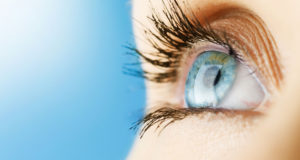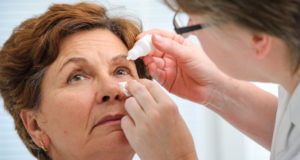Winter may be slow to start this season, but soon we’ll be welcoming our first real snowfall and hitting the slopes. When the world is blanketed in white, will you be ready to protect your eyes? Follow these tips to keep your vision safe all season long.
Don’t Neglect UV Protection
Your dermatologist may have told you to slather on the SPF year-round, but sun protection for your eyes is just as important, regardless of the time of year. In fact, the glare off of a dusting of freshly fallen powder can actually be more detrimental to your eyesight than a bright summer sun. When you are outside this winter, wear sunglasses or goggles that offer you 100% UV protection to help protect your eyes.
Romping outside this winter may help you get your needed dose of Vitamin D, but the effect of solar radiation on your eyes can be devastating. If, for example, you ski without appropriate eye protection, particularly at high altitudes, you’re vulnerable to a condition known as photokeratitis. Often referred to as “sunburn of the eye,” photokeratitis can lead to:
- Gritty feeling in the eye
- Photosensitivity (extreme sensitivity to light)
- Tearing sensation
- Redness and swelling
Fortunately, the side effects associated with this condition are rarely permanent. Long-term exposure to UV radiation, however, can lead to macular degeneration, cataracts, and permanent damage to the retina.
Choosing Eye Protection
If you’re a cross-country skier, skater, or snowshoe enthusiast, quality sunglasses will provide you with adequate sun protection. However, if you enjoy downhill skiing or snowboarding, it’s time to invest in a pair of goggles. Careening downhill at fast speeds can be dangerous, particularly when you’re in close proximity to trees. There is a dizzying array of options for winter eye protection, but buying the wrong kind of eye protection can actually do more harm than good.
- Material Matters. Choose goggles made from polycarbonate material. Plastic or glass versions can shatter upon impact, sending shards into your eyes.
- Polarized lenses can help protect your vision from the glare coming off a crop of freshly fallen snow.
- Know your lens colors. Rose colored lenses help you see ion overcast conditions, while yellow ones improve contrast. Conventional grey and brown tints work best for sunny conditions. If you’re a night skier, stick to clear versions.
If you wear prescription lenses, you have a couple of options. You can usually wear goggles over your existing eyewear, provided you have an anti-fog coating. Purchasing contacts is another option if you don’t want to be encumbered by dual sets of lenses. Finally, you can buy goggles with prescription lenses with the help of your local optometrist or ophthalmologist.




